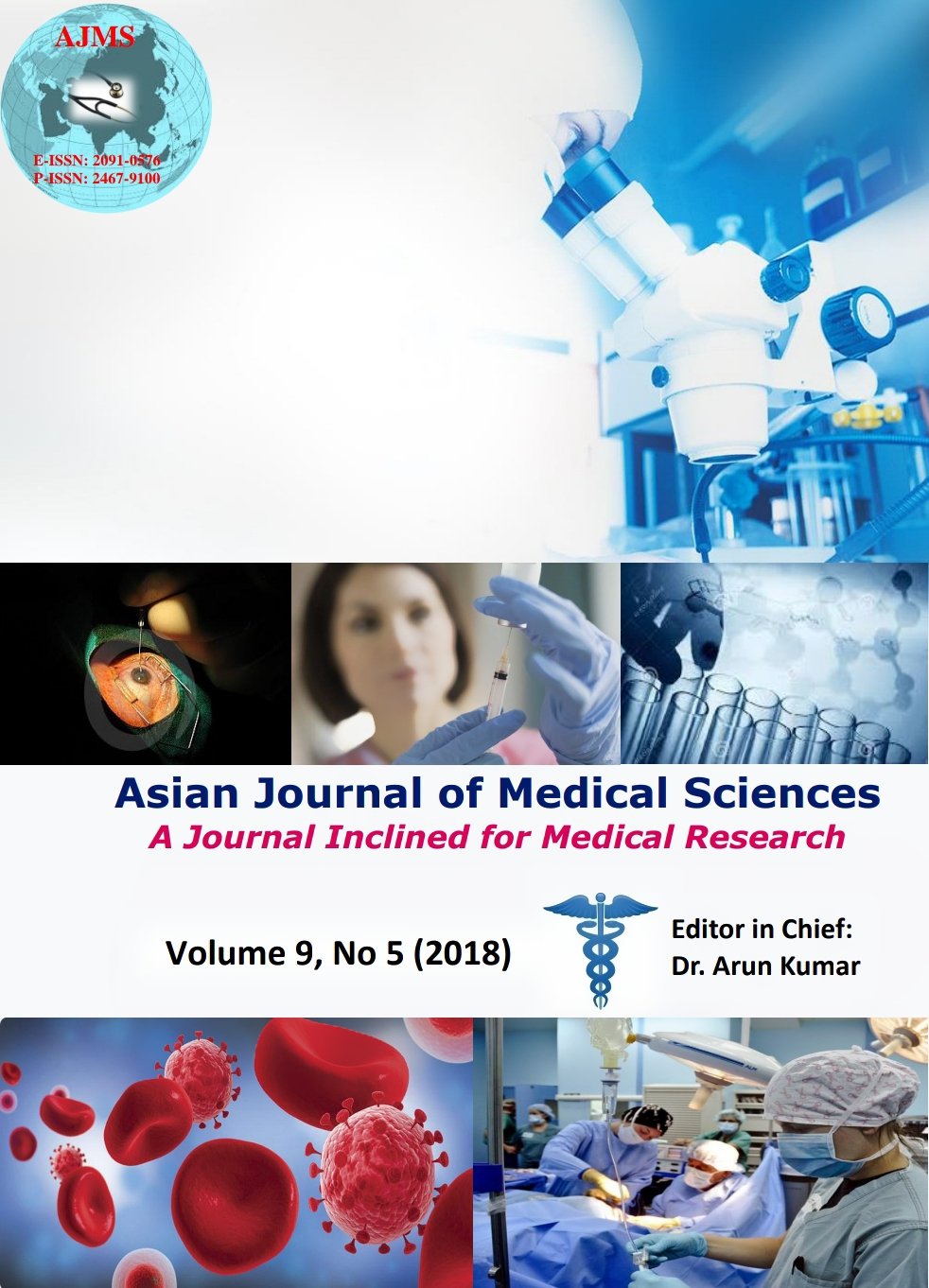Study of unstable fracture of Distal Tibia and its outcome managed with Minimally Invasive Plate Osteosynthesis (MIPO)
Keywords:
Distal tibia fracture, MIPO, Plate fixationAbstract
Background: Distal tibia fracture is one of the difficult fractures to manage. There are many treatment options from conservative management to operative management. Each treatment methods have its advantages and disadvantages. Minimally invasive percutaneous osteosynthesis (MIPO) in distal tibia fracture has better outcome due to the advantages of minimal soft tissue dissection, preservation of periosteum and fracture hematoma. There is indirect reduction of fracture with correction of axial and rotation malalingement.
Aims and Objective: The aim of the current study was to evaluate the functional and clinical outcome of distal tibia fracture treated with distal tibia anatomical contoured plate by MIPO technique.
Materials and Methods: This was a prospective study that included 56 patients of which 37 were males. 31 patients had right sided distal tibia fracture. The most common mechanisms of injuries were road traffic accidents and fall injury. There was 6 cases of type I open fracture and 3 cases of type II open fracture. The patients were followed up at
2 weeks, 6 weeks, 3 months, 6 month and 12 months’ time.
Result: The mean age of the patients was 45.89 years. The mean time for partial and full weight bearing was 7.29 weeks and 14.29 weeks respectively. Radiological union was seen at 17.75 weeks. There was no case of nonunion or delayed union. The most common complication was ankle stiffness (5/56). Conclusion: MIPO is a good treatment option for unstable distal tibia fracture because of minimal soft tissue dissection and preservation of periosteum and fracture hematoma.
Asian Journal of Medical Sciences Vol.9(5) 2018 73-76
Downloads
Downloads
Additional Files
Published
How to Cite
Issue
Section
License
Authors who publish with this journal agree to the following terms:
- The journal holds copyright and publishes the work under a Creative Commons CC-BY-NC license that permits use, distribution and reprduction in any medium, provided the original work is properly cited and is not used for commercial purposes. The journal should be recognised as the original publisher of this work.
- Authors are able to enter into separate, additional contractual arrangements for the non-exclusive distribution of the journal's published version of the work (e.g., post it to an institutional repository or publish it in a book), with an acknowledgement of its initial publication in this journal.
- Authors are permitted and encouraged to post their work online (e.g., in institutional repositories or on their website) prior to and during the submission process, as it can lead to productive exchanges, as well as earlier and greater citation of published work (See The Effect of Open Access).




